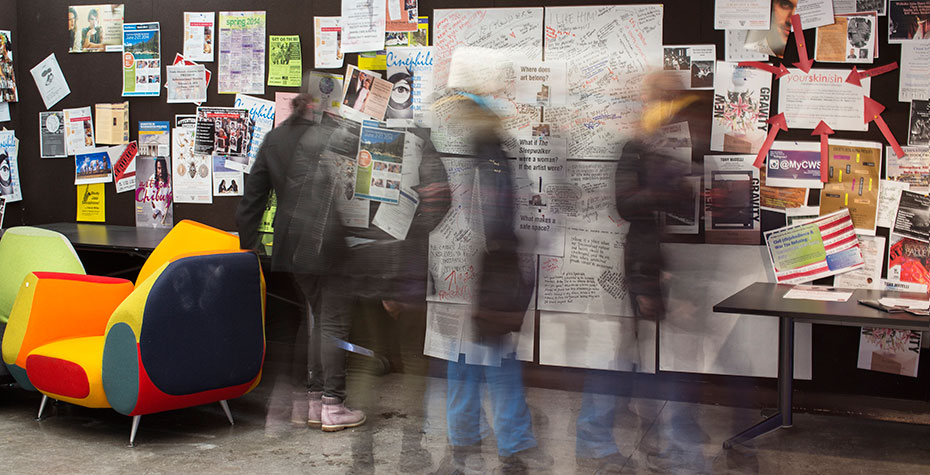Outdoor Portion of ‘Tony Matelli: New Gravity’ Exhibition the Topic of Conversation on and off Campus

On Monday, a sculpture that is part of a new exhibit at Wellesley’s Davis Museum was installed outdoors, near a lamppost along College Road, and framed by the museum gallery’s windows to connect it to the exhibit inside. The campus almost immediately erupted with responses to the super lifelike fiberglass-over-steel figure, a middle-aged man wearing briefs, in stereotypical sleepwalking posture.
Reactions have run the gamut from delighted to disturbed, most starting from the position of surprise. All of which has led to an ongoing conversation about the nature, purpose, and responsibility of art; the definition of safe spaces; the psychology of trauma; questions of gender difference; and more.
A day of heavy snows postponed the opening of the indoor portion of the exhibition and artist’s talk from Wednesday until Thursday. In the interim, the Wellesley community has been engaged in spirited dialogue in all kinds of channels, in true liberal arts fashion surfacing the many subtleties in arguments approving or objecting to the piece of art. For example, one student blog post suggests that the best way to care for community members who have suffered trauma in the past is not so much to remove art that may trigger upsetting memories but to more actively love and care for those people; another blogger thinks work of such an “antagonistic” nature is not appropriate to the Wellesley setting.
This week, some students have dressed up the sculpture, taken videos with it reenacting the final scene of Titanic, taken selfies with it, spoofed a popular song by photoshopping it on a wrecking ball, but some expressed deep concern that its extremely lifelike and startling presence could trigger memories of sexual assault for members of the community, and have filed a petition on change.org requesting its removal to the Davis galleries.
On Thursday, students who spearheaded the petition were invited to a private discussion with sculptor Tony Matelli and Lisa Fischman, director of the Davis Museum, which was moderated by Kris Niendorf, director of residential life at Wellesley. Matelli and Fischman reached out to the students because they said they wanted to better understand the students' response to the work.
Earlier in the week, blank poster paper was put up in the Lulu Chow Wang Campus Center, inviting interactive commentary on the following questions:
- Where does art belong?
- What if The Sleepwalker were a woman? If the artist were?
- What makes a safe space?
And new sheets of paper are added as these fill up.
Several faculty members in conversation have shared the opinion that the clamor about the sculpture has provided teachable moments in their classrooms.
The exhibit opening took place on the evening of February 6, and the artist gave a talk to a capacity crowd, taking questions from the audience. A few protesters were present, respectfully sharing their views.
News outlets locally and then around the country, even across the globe, have found the story intriguing—some seriously addressing the issues raised, others finding ways to make it comical. Of the former, the Boston Globe and Associated Press quoted President Bottomly and spoke with community members on Tuesday for varying reactions. As the week progressed, students and alums powered social media channels and wrote letters to editors, including to the Wellesley News. National media—from Time, People, and ELLE magazines to CNN, the New York Times , the UK's Daily Mail, and Germany’s Der Spiegel—joined the conversation.
We expect the dialogue to be ongoing. The Matelli exhibit will be at Wellesley until July 20, 2014.
